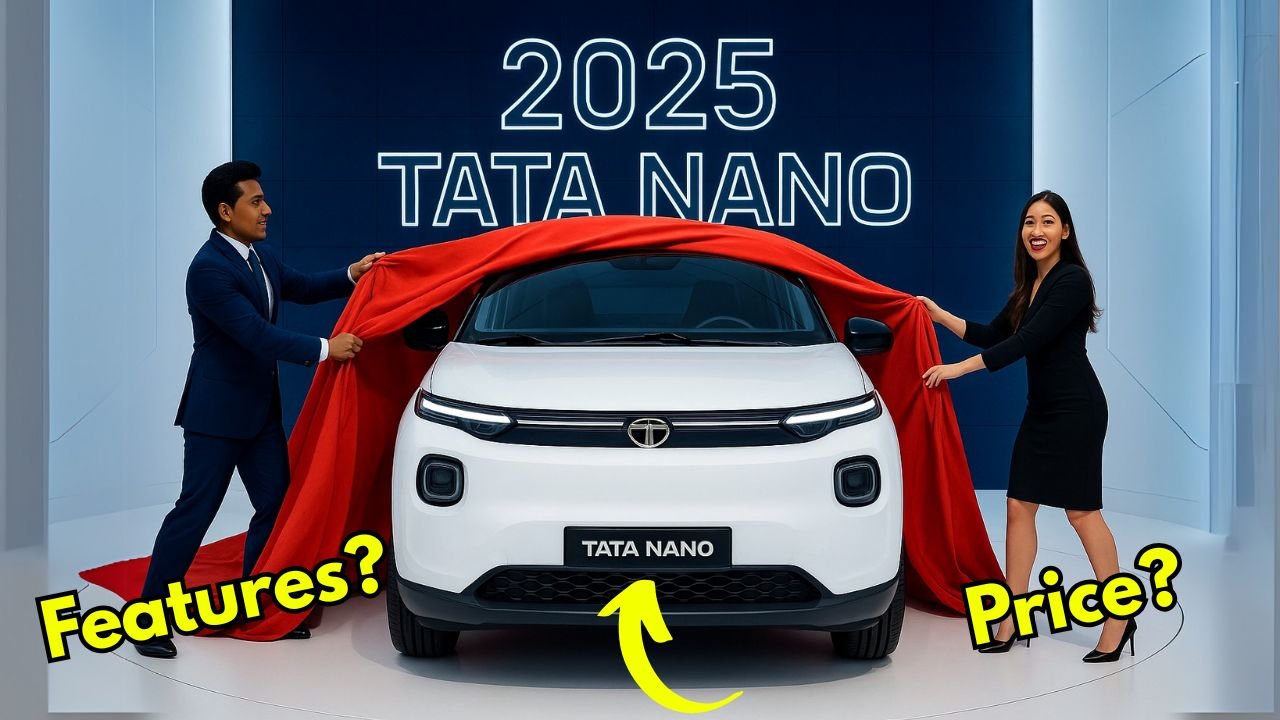When Tata Motors first introduced the Nano back in 2008, it was pitched as the “people’s car”—a no-frills, no-nonsense vehicle designed to give millions their first four-wheeled ride. Fast forward to 2025, and the Nano is staging a surprising comeback—but it’s not the same scrappy budget car we remember.
It’s smarter. Sleeker. And electric.
The Tata Nano 2025 is aimed squarely at the modern middle class—those who juggle budget-conscious decisions with a desire for style, convenience, and sustainability. It’s no longer just about affordability. It’s about value. And this time, Tata might just have nailed it.
New Look, Same Spirit
Let’s get this out of the way: the new Nano doesn’t look like the old one. And that’s a good thing.
Gone are the cartoonish curves. In their place, you’ve got a sharper, more confident design—LED headlamps, clean lines, and a front grille that actually looks like it belongs in 2025. It’s compact, yes, but not toy-like. This is a real car, for real drivers.
Inside, it’s equally surprising. There’s a functional 7-inch touchscreen, support for Bluetooth and USB, and even a digital driver display. It’s minimalistic, not barebones. Tata seems to have figured out how to make it feel current without inflating the price.
You can tell they listened. This isn’t a gimmick or a budget stunt—it’s a practical city car that finally feels proud of itself.
Read Also: Hero Splendor Electric 2025: Affordable Bike With 150 Km Range, Check price
Electric DNA: Practical, Not Just Trendy
Let’s talk about the engine—or rather, the motor.
The Nano 2025 is fully electric, powered by a small lithium-ion battery that delivers a range of roughly 180 to 200 kilometers per charge. That may not break records, but let’s be honest: for urban commuting, it’s more than enough.
Top speed? Around 80 km/h—not thrilling, but absolutely fine for city traffic. And torque? Instant. Zipping between traffic lights or squeezing through a tight lane? This little guy handles it like a scooter on steroids, minus the pollution.
It charges in about six hours at home, or under an hour on a fast charger. Simple, efficient, and clean.
Nano 2025: What’s Inside the Hood (and Cabin)
| Spec/Feature | Details |
|---|---|
| Powertrain | Fully Electric |
| Battery Range | 180–200 km (claimed) |
| Top Speed | ~80 km/h |
| Charging Time | 6 hrs (home), 1 hr (fast charge to 80%) |
| Infotainment | 7” Touchscreen, Bluetooth, USB, AUX |
| Safety Features | Dual Airbags, ABS, Rear Parking Sensors |
| Seating | 4 adults (tight but doable) |
| Transmission | Automatic (Single-speed EV drive) |
| Expected Price (INR) | ₹5–6.5 lakh |
| Launch Date (Expected) | Late 2025 |
The Nano That Grew Up
What makes this Nano different isn’t just the tech or the looks. It’s the positioning. Tata isn’t pitching it as the cheapest car in the world anymore. That label did more harm than good last time—it made people question its safety, quality, even its worth.
This time, they’re selling it as a smart buy. A city-focused EV that’s ideal for people tired of spending too much on fuel, dealing with parking nightmares, or relying on public transport.
It’s for students, working professionals, small families, even seniors who want an easy-to-drive, low-maintenance car. The new Nano doesn’t scream “entry-level” anymore—it says “sensible.”
How It Fits Into a Changing India
There’s a reason Tata chose 2025 for the Nano’s comeback. India’s EV infrastructure is growing fast. Public charging stations are no longer unicorns, and people are warming up to electric vehicles—not just Teslas and Nexons, but cars that don’t break the bank.
The Nano fits into this puzzle beautifully. It’s the commuter car that can quietly disrupt the two-wheeler market. It’s the backup family car that won’t make you take a loan. And it’s the EV that could get entire apartment complexes talking.
Plus, let’s not forget: Tata is now known for building safer, better-quality cars. That reputation is rubbing off on the Nano 2025, and rightly so.
Final Thoughts: More Than a Comeback
Is the new Tata Nano perfect? No. It’s not a long-distance tourer. It’s not going to win drag races. But that’s not the point.
The point is this: the Nano 2025 finally understands its own purpose. It’s designed for the real world—for Indian roads, for budget-conscious buyers, for people who want a clean, reliable, and affordable way to get around town.
It’s not trying to be the cheapest car anymore. It’s trying to be the smartest car in its price range. And it might just be.
FAQs
1. Is the Tata Nano 2025 available only as an EV?
Yes, the updated Nano is fully electric. No petrol or hybrid options are expected.
2. What is the expected price range of the new Nano?
Tata is likely to price it between ₹5 and ₹6.5 lakh, making it one of the most affordable EVs in India.
3. How many people can comfortably sit in the Nano?
It seats four adults comfortably, though taller passengers might find the rear a bit snug.
4. Can I charge the Nano at home?
Absolutely. It supports home charging with a standard wall socket, as well as public fast chargers.
5. When is the official launch?
Tata is expected to launch the Nano EV in late 2025, possibly with pre-bookings by mid-year.
